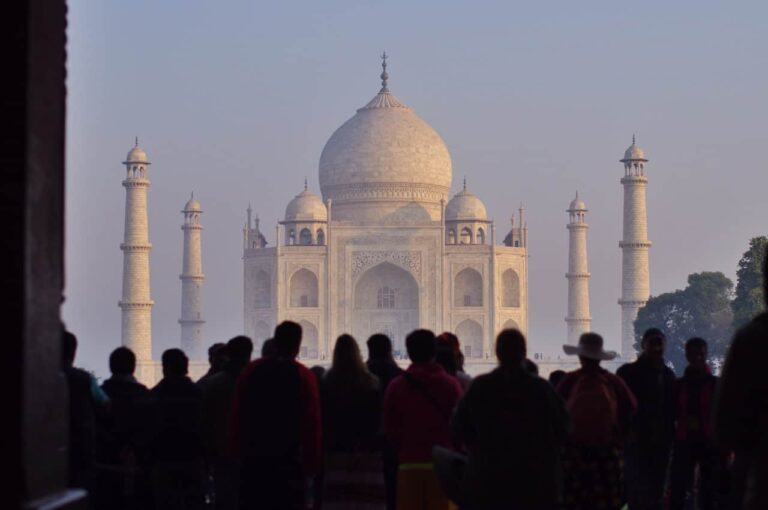The Seven Wonders of the World represent a collection of extraordinary and iconic landmarks that showcase the remarkable achievements of ancient civilizations. These wonders have captured the imagination of people worldwide, symbolizing the architectural brilliance of the human spirit.
The concept originated with the ancient Greeks, who compiled a list known as the Seven Wonders of the Ancient World. Over time, the definition of the Seven Wonders has expanded to include both ancient and modern marvels, reflecting the evolving perspectives and admiration for exceptional human creations.
Table of Contents
1. The Colosseum, Rome, Italy
The Colosseum, sited in the heart of Rome, Italy, is a monumental amphitheater that stands as a timeless symbol of the grandeur and engineering prowess of the ancient Roman Empire.
Constructed between 70 and 80 AD, it was a marvel of architectural innovation, capable of hosting tens of thousands of people who gathered to witness gladiatorial contests, mock naval battles, and other spectacles.
The Colosseum’s massive elliptical structure, adorned with a magnificent outer facade of travertine stone, showcases the mastery of Roman engineering and the enduring legacy of their cultural heritage. Today, the Colosseum remains an iconic landmark, attracting millions of visitors captivated by its historical significance, sheer size, and the palpable sense of ancient history that permeates its walls.
2. The Great Wall of China
The Great Wall of China stretches over 13,000 miles (21,196 kilometers) across the northern landscapes of China. It is an architectural marvel and a testament to the ancient civilization’s perseverance. Built over centuries of laborious effort, the Great Wall served as a formidable defensive structure.
It embodies the determination and resilience of the Chinese people. Made of stone, brick, and other materials, it winds through mountains, valleys, and vast plains. Along the way, it showcases breathtaking views and stands as a testament to human engineering.
Today, the Great Wall stands as a symbol of China’s rich history and cultural heritage. It captivates millions of visitors from around the globe. They come to witness its grandeur, walk along its ancient pathways, and immerse themselves in its historical significance.
3. The Taj Mahal, India
This architectural masterpiece is a global symbol of love and beauty. Commissioned by the Mughal emperor Shah Jahan in the 16th century as a mausoleum for his beloved wife, Mumtaz Mahal, it is a shining example of Islamic architecture and unparalleled craftsmanship.
The Taj Mahal is made of white marble and exhibits intricate carvings, delicate inlays, and exquisite symmetry. It creates a breathtaking sight enhanced by its serene reflection in the surrounding gardens and reflecting pool.
The Taj Mahal is a UNESCO World Heritage site, attracting millions of visitors captivated by its ethereal beauty and the enduring love story that inspired its creation.
4. Christ the Redeemer, Brazil
Perched atop the Corcovado mountain in Rio de Janeiro, Brazil, Christ the Redeemer is an iconic statue. It has become a symbol of religious devotion and the vibrant spirit of Brazil.
The statue stands at a towering height of 98 feet (30 meters), with its arms outstretched. From this position, it overlooks the city and offers a breathtaking view of its stunning surroundings.
Constructed in the early 20th century, this colossal statue is made of reinforced soapstone and concrete. It represents the fusion of artistry and engineering. Christ the Redeemer’s majestic presence and embracing gesture have made it a powerful emblem of faith, unity, and cultural identity.
5. Machu Picchu, Peru
Machu Picchu is an ancient Incan citadel high in the Andes Mountains of Peru. It has captivated the world with its mysterious allure and architectural splendor.
Built in the 15th century, it remained hidden from the outside world until its discovery in 1911. This UNESCO World Heritage site stands as a testament to the advanced engineering skills and cultural sophistication of the Inca civilization.
Surrounded by lush green valleys, Machu Picchu’s remarkable stone structures, terraces, and intricate stonework showcase the harmonious integration of human construction with the natural landscape. As visitors explore the labyrinthine pathways and absorb the awe-inspiring vistas, they transport themselves to a bygone era.
6. Chichén Itzá, Mexico
Chichén Itzá is an archaeological site located on the Yucatán Peninsula in Mexico. It is renowned for embodying the architectural legacy of the ancient Maya civilization. The site was built between the 9th and 12th centuries and is recognized as a UNESCO World Heritage site.
This pyramid rises majestically, revealing the Mayans’ advanced understanding of astronomy and their skillful precision in architectural design. Chichén Itzá’s complex includes temples, observatories, and ball courts that offer a glimpse into the Mayan people’s rich history and spiritual beliefs.
7. Petra, Jordan
Petra is found within the dramatic red sandstone cliffs of southern Jordan. It stands as a breathtaking archaeological marvel and a testament to the ingenuity of the ancient Nabateans.
Over 2,000 years ago, they carved this UNESCO World Heritage site into the rock face, presenting a captivating fusion of natural beauty and architectural brilliance. The iconic Treasury serves as a gateway to a city hidden within the rose-colored cliffs.
Visitors can explore the ancient tombs, temples, and elaborate facades that dot the landscape. As they do, they are transported to a bygone era, marveling at the sophistication and craftsmanship of the Nabatean civilization. The sense of wonder and mystery that permeates its ancient walls makes it an unforgettable destination for travelers from around the globe.
Read also: Over 50,000 years of history: the four oldest civilizations of the world
The Seven Wonders of the World Captivate and inspire people around the globe
From the China Great Wall to the iconic Colosseum in Rome, each wonder represents a remarkable achievement of human ingenuity, architectural brilliance, and cultural significance. These wonders serve as tangible reminders of our shared history and the enduring legacy of ancient civilizations.
As we explore these wonders, we gain a deeper appreciation for the incredible achievements of our ancestors and the enduring power of human creativity.
The Seven Wonders of the World will forever stand as testaments to the remarkable capabilities of the human spirit and as reminders of the awe-inspiring wonders surrounding us.
Read also: Repatriating colonial-era artifacts: should the British Museum return them?












